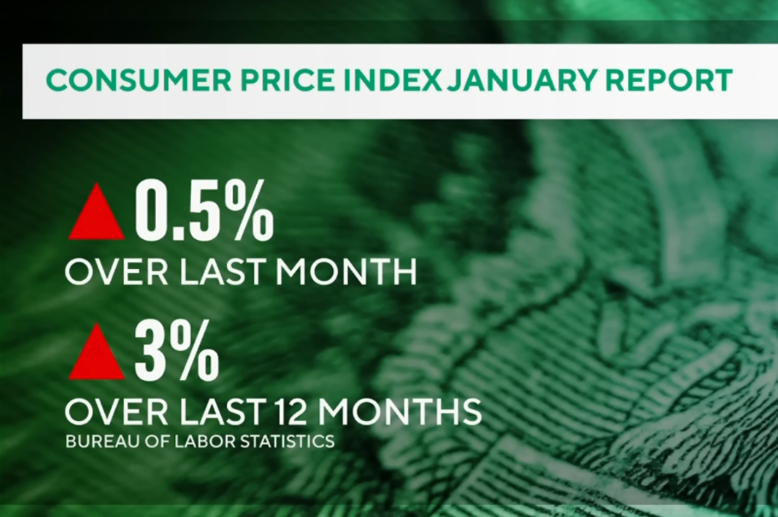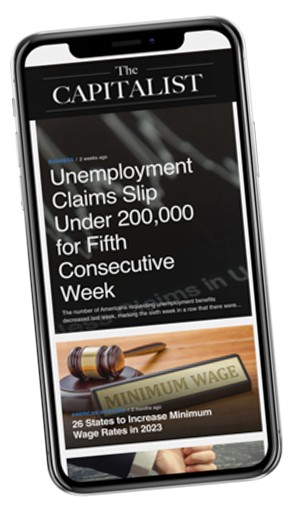News
Wall Street Wobbles As January Inflation Report Shows Prices Are Still Going Up

Source: YouTube
The Bureau of Labor Statistics (BLS) released January’s inflation report, revealing a 3% year-over-year jump in consumer prices, up from December’s 2.9%. Monthly CPI rose 0.5%, marking the largest increase since August 2023. Food costs surged, led by a 15.2% spike in egg prices. Used car prices climbed 2.2% due to inventory shortages. Core inflation, excluding food and energy, rose to 3.3%, driven by housing and service cost increases. Additionally, economists stressed that shelter costs, which rose 4.4% annually, remain a primary inflation driver. Rising medical care and insurance expenses continue to strain household budgets.
Wall Street Wobbles as Rate Cut Hopes Fade
Markets tumbled on the report. The Dow dropped 0.5%, the S&P 500 slipped 0.27%, and the Nasdaq eked out a 0.03% gain. Investors pulled back on rate cut expectations, pushing the 10-year Treasury yield to 4.62%. Volatility surged as traders adjusted portfolios in response to prolonged inflation fears.
Meanwhile, Federal Reserve Chair Jerome Powell stated that consistent progress on inflation is necessary before the agency applies more rate cuts. Analysts warned that sustained high rates could weigh on credit markets and dampen consumer sentiment.
Defensive Stocks Go Up, Consumer Stocks Go Down
Sectors exposed to consumer spending, including retail and travel, posted notable losses. Airlines and hospitality stocks declined amid concerns that rising prices could slow travel demand. Growth stocks faced pressure, with tech leaders Apple and Tesla experiencing intraday swings before closing flat. Investors shifted toward defensive sectors, including consumer staples and utilities, seeking protection from market instability. Institutional investors increased hedging activity, signaling expectations of prolonged volatility.
Banking and real estate stocks were hit hardest by rising borrowing costs. JPMorgan Chase and Bank of America both fell over 1%. Homebuilders Lennar and DR Horton lost more than 2% amid refinancing concerns. Retailers Target and Macy’s slid on fears that higher inflation would reduce consumer spending. But despite the market turmoil, some stocks thrived. Semiconductor leaders NVIDIA and AMD advanced, driven by robust AI demand. Energy stocks, including ExxonMobil, rose on higher oil prices. CVS Health posted gains, buoyed by better-than-expected earnings.
Tariff Troubles Haunting Costs
Trump’s 25% tariffs on steel and aluminum and 10% duties on Chinese imports are increasing production costs, which companies are passing to consumers. Strong spending from affluent consumers allows firms to maintain elevated prices. Supply chain challenges persist, pushing used car prices up 2.2%. Rising healthcare costs are also contributing to inflation.
President Trump rejected the January report as “Biden inflation” and demanded immediate rate cuts, a stance Powell immediately dismissed. Instead, the President backed Elon Musk’s call for $1 trillion in federal spending cuts to reduce the deficit—a move economists warn could cut GDP by 4% and spike unemployment. Meanwhile, business leaders argue that Trump’s tariffs are raising costs, but the latter maintained they protect U.S. industries and reduce dependency on foreign goods. Economists caution that tariffs without supply-side reforms could worsen inflation.
Solutions or Setbacks? The Trade-Offs of Trump’s Approach
Trump’s proposed solutions face scrutiny. Immediate rate cuts contradict the Federal Reserve’s strategy and add market uncertainty. Musk’s spending cuts may reduce inflation but could weaken demand and increase layoffs.
Experts favor a balanced approach: gradual rate adjustments, targeted spending cuts, and supply-side reforms. Boosting domestic production and easing trade barriers could lower prices without sparking a recession.
How should the government tackle inflation to protect business growth and investments? Let us know what you think!



